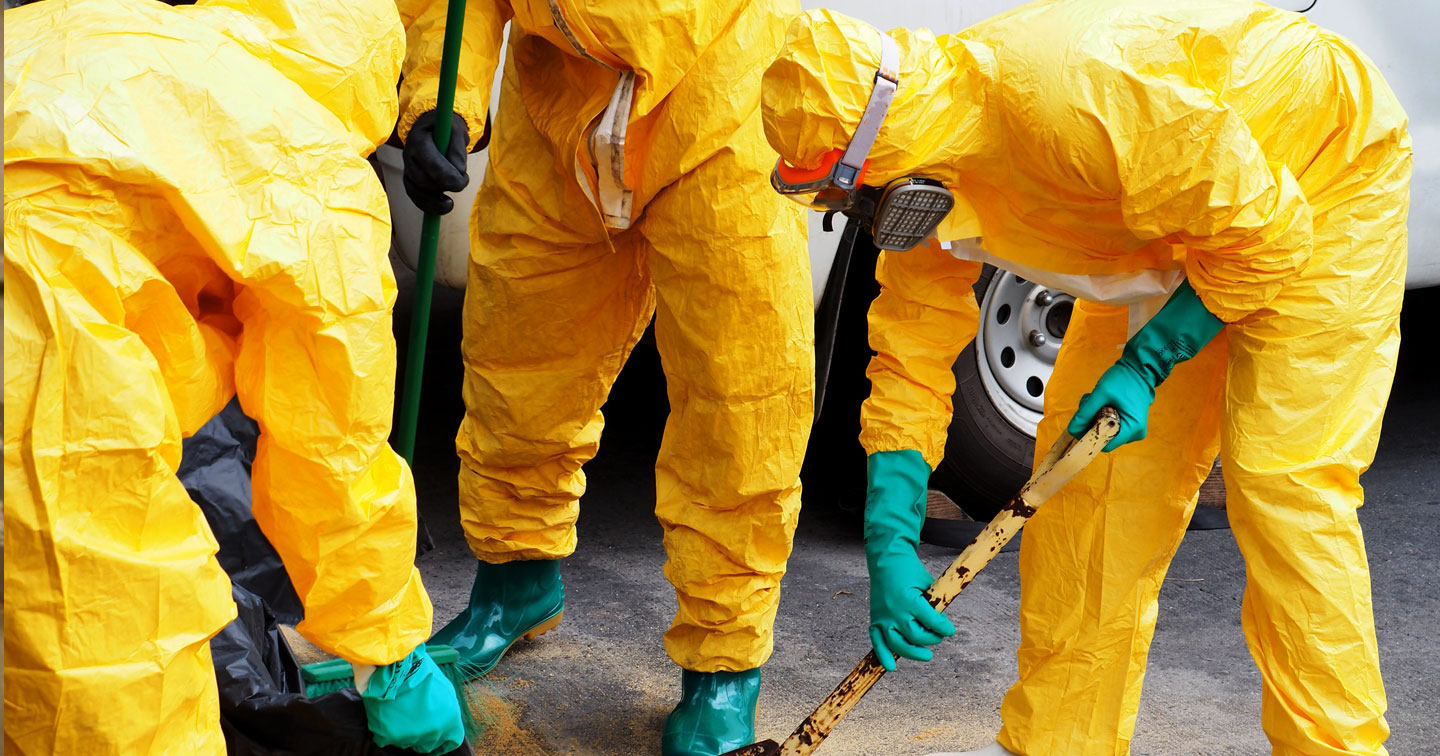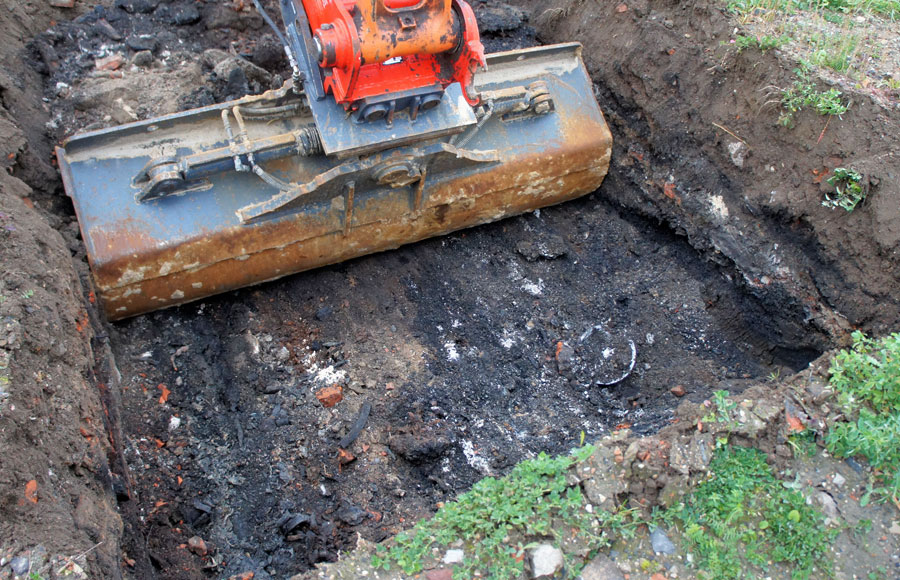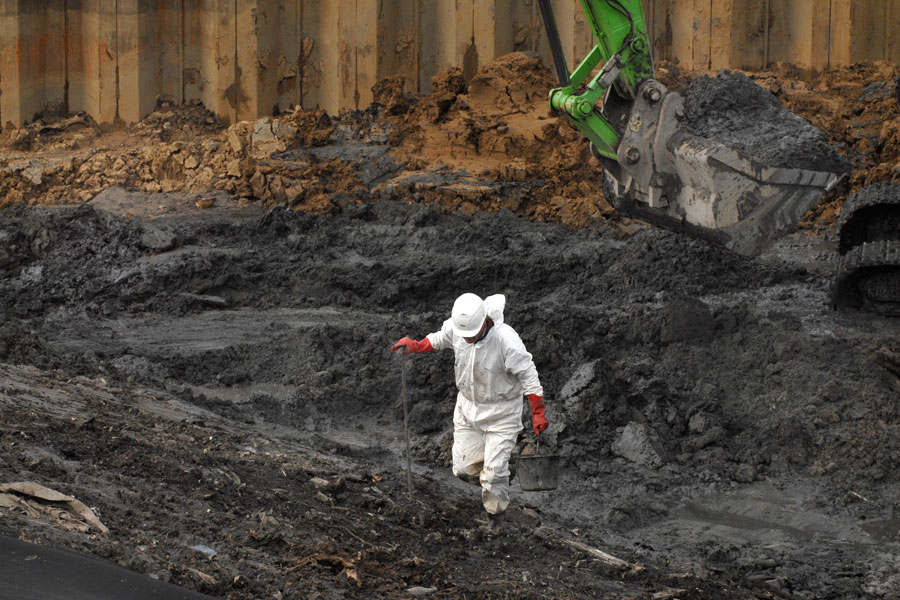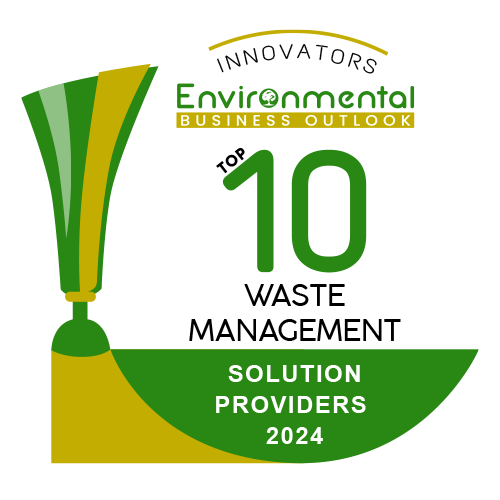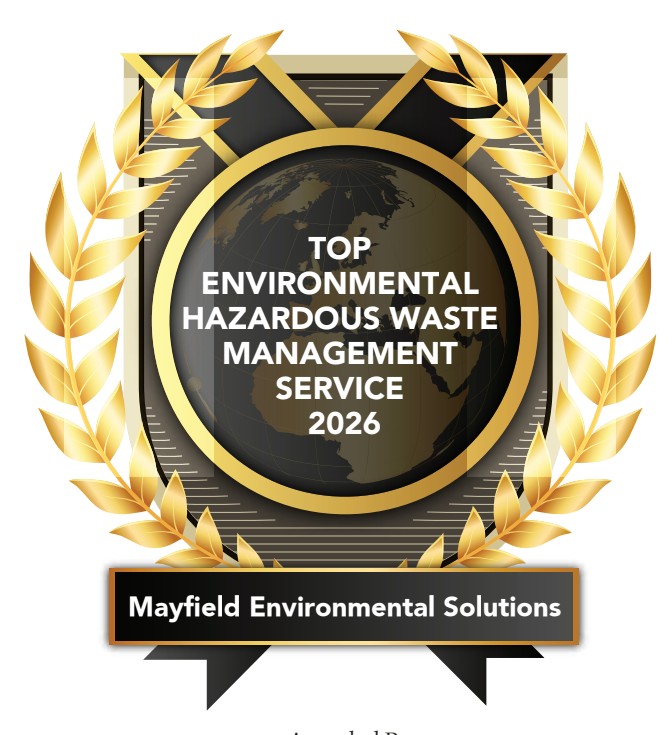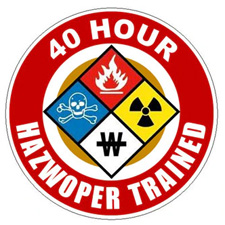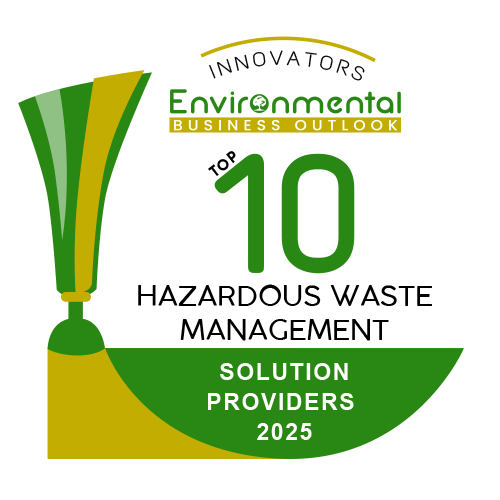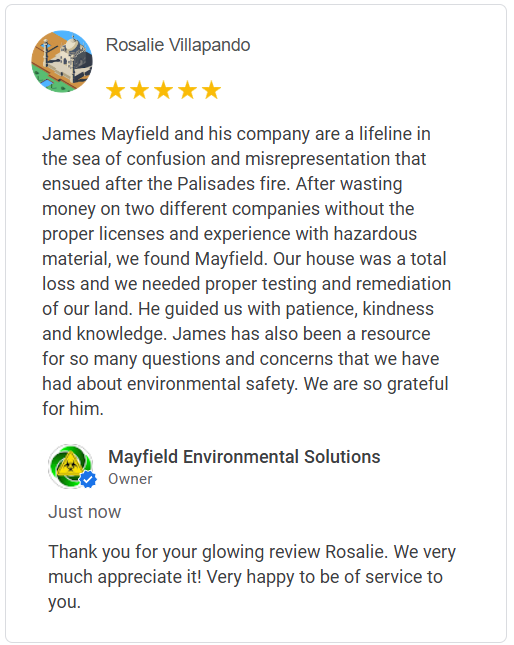See our interview on the “Jason Alexander Show” about the Palisades/Eaton Fire disaster cleanup effort, as well as our biohazard cleanup work.
After Disasters: Making Homes Safe Again
Show: Really? no, Really? • Guests: James Mayfield (CEO, Mayfield Environmental Solutions) • Hosts: Jason Alexander & Peter Tilden
Originally published: Apr 28, 2025 • Topic: Wildfire & catastrophe cleanup, soil/ash contamination, crime-scene & hoarding remediation
Episode Summary
Earlier this year, Los Angeles experienced devastating fires. Beyond the flames, toxic soot and debris left many homes uninhabitable. In this episode, the hosts speak with James Mayfield, CEO of Mayfield Environmental Solutions, about what really happens after disasters—testing for hazards, soil and ash cleanup, air quality, contents cleaning, and how to choose qualified contractors.
In This Episode
- What tests are actually necessary after fires and smoke exposure?
- Lead, asbestos, heavy metals, and PAHs: where they show up and why.
- HEPA vacuuming, air scrubbers, ozone, and contents “pack-out.”
- Why improper cleaning can create a second environmental disaster.
- How to hire the right hazmat/remediation firm (licenses & certifications).
- Crime-scene, hoarding, rodents, and health risks (e.g., Hantavirus).
- Pools, rainfall runoff, erosion control, and when to test for heavy metals.
- Insurance realities vs. hazmat disposal costs.
Transcript
Light edits applied for clarity and flow. Timecodes removed.
Jason (Host): Not long ago, we had to skip an episode because of the Los Angeles fires. Members of our production community were affected. One of them is my partner Peter, who didn’t lose his home in the Palisades—but he can’t live in it. There’s a lot of remediation still needed. I’ve been hearing about it; he’s been living it. It’s been awful.
Jason (Host): What’s left behind—especially in the Palisades—is residue that’s incredibly toxic: burned lithium batteries, metals, asbestos, chemicals, particulates in soil and water. We even had crews clean ash off our windows and screens so we could open them again. We’re still trying to figure out if our pool needs to be drained or remediated.
Jason (Host): We wanted to talk to someone who understands toxic and disaster cleanup, because the post-fire cleanup effort can itself become a significant environmental risk if it’s done wrong.
Peter (Co-host): I was hesitant to talk about this. It’s emotional. My family’s okay, but the town is gone. My kid grew up there. The storefronts, the landmarks—gone. It’s heartbreaking. And the experience of being escorted by police to your home—that stays with you.
Jason (Host): Our guest is James Mayfield, CEO of Mayfield Environmental Solutions. His family has served Southern California for two generations as general contractors in environmental cleanups—biohazard, homeless encampments, crime scenes, drug labs, the works.
Jason (Host): James, welcome. You’ve done crime-scene cleanup, decomposition, hazardous sites. How do you handle the trauma and still do the job?
James (Guest): Some jobs are extremely dangerous—risk of HIV, Hantavirus, hepatitis. Others aren’t as bad. You learn not to minimize families’ pain. Sometimes people say they can still smell odors even after thorough decontamination; trauma can make the brain “remember” odors that are gone. That’s real.
Jason (Host): About the fires: some people say ash isn’t always dangerous—like fireplace ash. Is danger being overstated?
James (Guest): As a FEMA and Army Corps vendor, we were early on-site. Contamination varies by location—proximity to industrial sources, the age of buildings, and Santa Ana winds. Purely residential areas can still have substantial asbestos and heavy metals. I try to be honest and avoid unnecessary sampling where it won’t yield useful data.
James (Guest): The Palisades became a rush for work; many outfits weren’t licensed. “Restoration” companies that do smoke/fire/mold work often don’t need a contractor’s license in California. For heavy soot and hazardous materials, you should hire hazmat contractors—proper insurance, HAZWOPER training, respirators.
Jason (Host): Smoke odor—can you really remove it?
James (Guest): Ozone is highly effective—it breaks down odor molecules—though it can damage rubber, insulation, and even fine art if not handled properly. Porous contents (like furniture and textiles) often require “pack-out” and professional contents cleaning; it’s meticulous and expensive, but it can work.
Jason (Host): What about soil removal in the Palisades and Altadena? People worry that excavation throws contaminants back into the air.
James (Guest): Dust control is critical—light misting to suppress dust, but not so much water that you cause erosion and runoff. Multiple agencies got involved, and there were regulatory contradictions. The initial focus on household hazardous waste left ash/soot in place; then we had wind events and atmospheric rivers that pushed contamination into the ocean. Rain can rinse surfaces, but it can also spread contamination downslope.
Jason (Host): Are indoor air tests helpful?
James (Guest): Often they’re not. Heavy metals settle; they’re not necessarily airborne. Air sampling can come back “clean” while contaminants sit on floors and surfaces. That’s why HEPA vacuuming and careful surface cleaning matter. Air scrubbers (with real HEPA) are useful, but they only capture what’s airborne.
Jason (Host): How’s the relationship with insurers?
James (Guest): Difficult. Insurers have demolition/debris benchmarks, but hazardous disposal costs (e.g., contaminated ash) are much higher. Homeowners can be caught between “debris” budgets and actual hazmat requirements.
Jason (Host): For homeowners: what cleaning solutions actually work?
James (Guest): Hydrogen peroxide is a workhorse. It foams on proteins, which helps locate blood residues and disinfect surfaces. For general decontamination, you still scrub and follow with appropriate agents. Ozone (properly used) helps with smoke odors. For asbestos or heavy-metal dust, you need HEPA vacuums, controlled removal, and proper PPE.
Jason (Host): Pools: if ash fell in, what should people test?
James (Guest): If you test, check for heavy metals (lead, cadmium, chromium, arsenic). Don’t just grab the top water—it won’t be representative; metals can settle. If possible, sample from traps or after vacuuming settled material. Draining is a judgment call; unnecessary draining wastes water.
Jason (Host): Hoarding and rodent issues?
James (Guest): Hoarding often overlaps biohazards. Rodent contamination can carry serious risks. The work is slow, sensitive, and can involve significant PPE, security for crews, and proper waste handling. It’s not just about “junk removal”—it’s environmental health.
Jason (Host): Bottom line for disaster victims anywhere: what should they ask when hiring?
James (Guest): Verify licenses applicable to hazmat work, not just “restoration.” Ask about HAZWOPER training, insurance levels, containment protocols (dust suppression, HEPA filtration, negative air), and disposal methods for hazardous debris. Be wary of high-pressure sales; insist on documented scopes and chain-of-custody for samples.
Jason (Host): James, thanks for the clarity—and for the work you and your crews do.
James (Guest): Thank you. We’re Southern California–based, federal/public works certified, and we take safety and compliance seriously.




